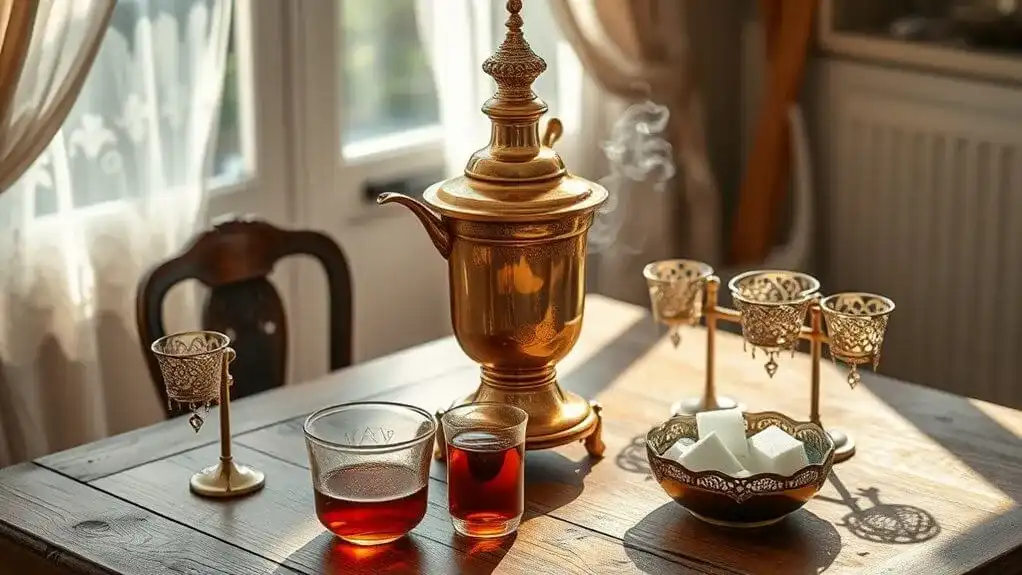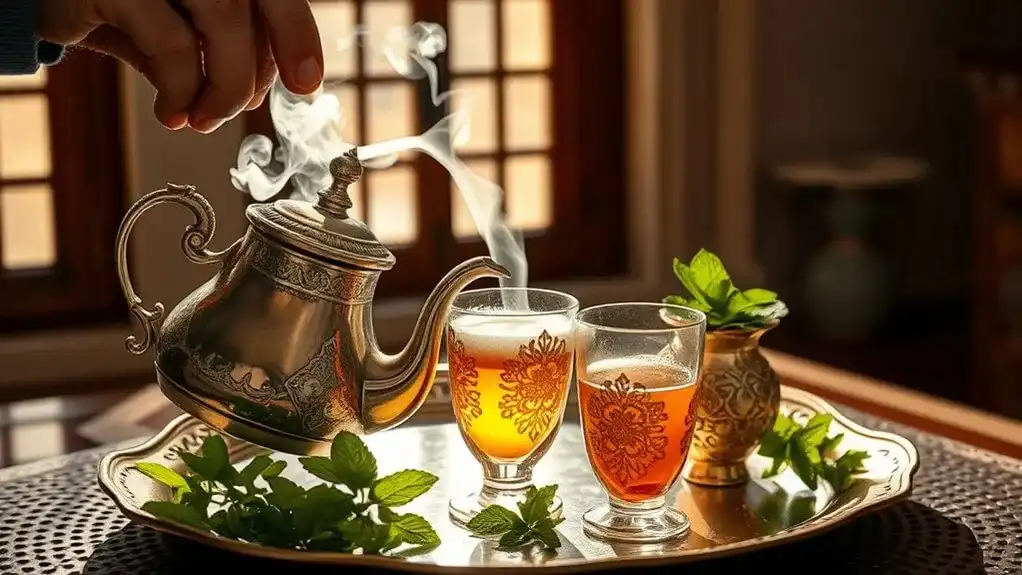Russia's samovar technology transformed tea from an elite luxury into a cultural cornerstone in the 17th century. This innovative "self-boiler" made continuous hot water accessible to all social classes, revolutionizing how Russians consumed and shared tea. The device's unique design, featuring a central chimney and intricate craftsmanship, created the perfect environment for extended family gatherings and social conversations. The samovar's evolution from coal-burning vessel to electric appliance reveals a fascinating journey of cultural preservation and technological adaptation.
Key Points
- The samovar's innovative self-heating design revolutionized Russian tea culture by making hot water continuously available for extended social gatherings.
- Transitioning from coal to electric models in the 1950s preserved samovar traditions while adapting to modern safety requirements.
- The samovar's technological advancement transformed tea from an elite luxury into an accessible daily ritual across all social classes.
- Traditional samovar design facilitated optimal heat distribution through its central chimney, enabling sustained conversations around the tea table.
- The integration of modern electric features maintained the samovar's cultural significance while simplifying the tea preparation process.
The Birth of Russia's Tea Revolution: From Trade Routes to Samovar Innovation
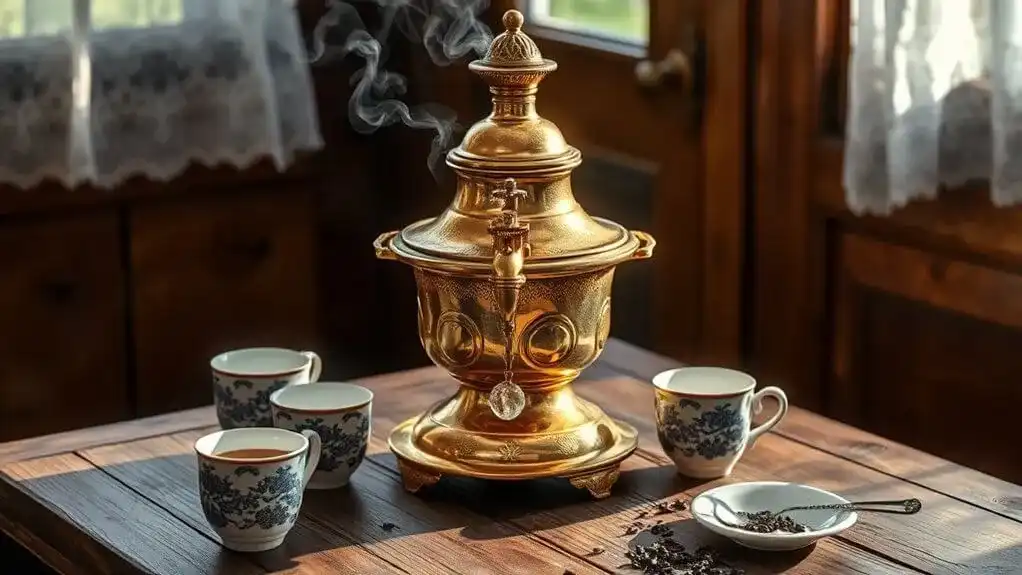
When tea first arrived in Russia during the 17th century through diplomatic gifts, including those from a Mongolian ruler in 1638 and Vassili Starkov in 1636, few could have predicted its transformative impact on Russian society. Tea diplomacy flourished after the 1689 Treaty of Nerchinsk, which formalized trade routes between Russia and China. Initially, the caravan trade relied on camels to transport this precious cargo, making tea an exclusive luxury for the aristocracy. Early Russian consumers viewed tea with skepticism, considering it a useless drink compared to traditional beverages like kvas.
Under Catherine the Great's reign, Russia's tea imports surged to over 3 million pounds by 1796. The trade hub of Kyakhta, nicknamed 'Siberian Hamburg,' became the epicenter of this booming commerce. Russian merchants exchanged textiles and leather for Chinese tea until 1855, when the barter system ended. The signing of the Treaty of Tianjin in 1858 marked a significant shift by opening Chinese ports to foreign trade. This thriving trade laid the foundation for Russia's deep-rooted tea culture. The subsequent invention of the early 18th century samovar revolutionized how Russians prepared and enjoyed their tea, making it accessible across all social classes.
Engineering Brilliance: The Anatomy of a Traditional Samovar
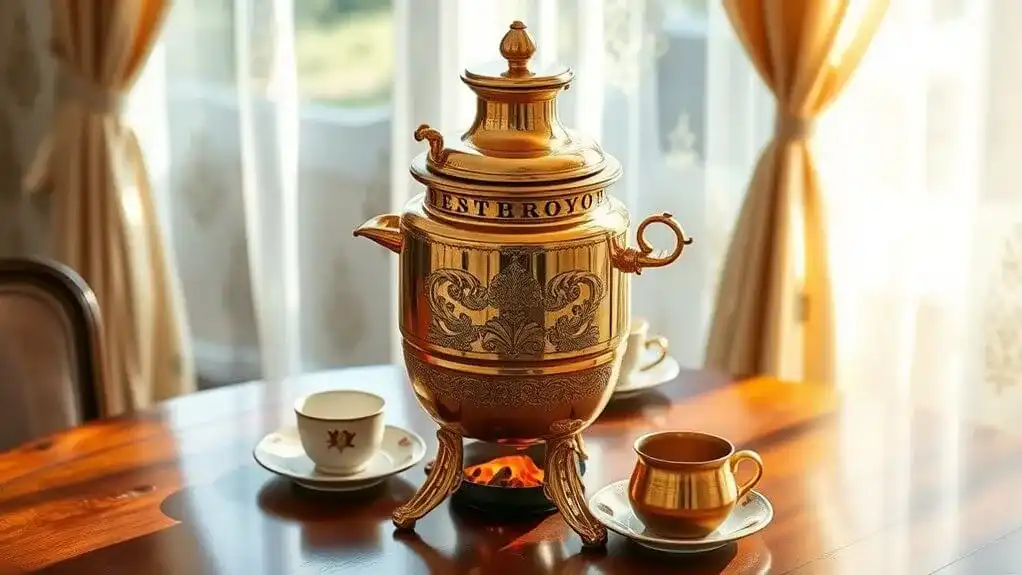
Three key components formed the foundation of a traditional samovar's ingenious design: a large water-filled urn, a central chimney for fuel, and a sophisticated base assembly. These design innovations worked in perfect harmony, with slots in the neck allowing for ideal air circulation and combustion. Originally used for preparing sbiten, a traditional Russian hot beverage combining honey, herbs and water, samovars later became essential for tea service. The samovar's cultural significance was enhanced by its intricate craftsmanship, featuring decorative handles with wooden rollers and ornate faucets for serving tea. Safety features like steam vents on the lid prevented dangerous pressure buildup during operation.
The manufacturing process reflected Russian technical expertise, involving a 12-stage production system where specialized craftsmen each created specific components. By the early 20th century, 170 different models existed, showcasing the evolution from individual workshop production to larger factory operations. The copper construction and varied decorative elements demonstrated how form and function merged in this revolutionary heating vessel. The device's name itself reveals its core purpose, as samovar translates to "self-boiler" in English.
Social Transformation: How Samovars Democratized Tea Drinking
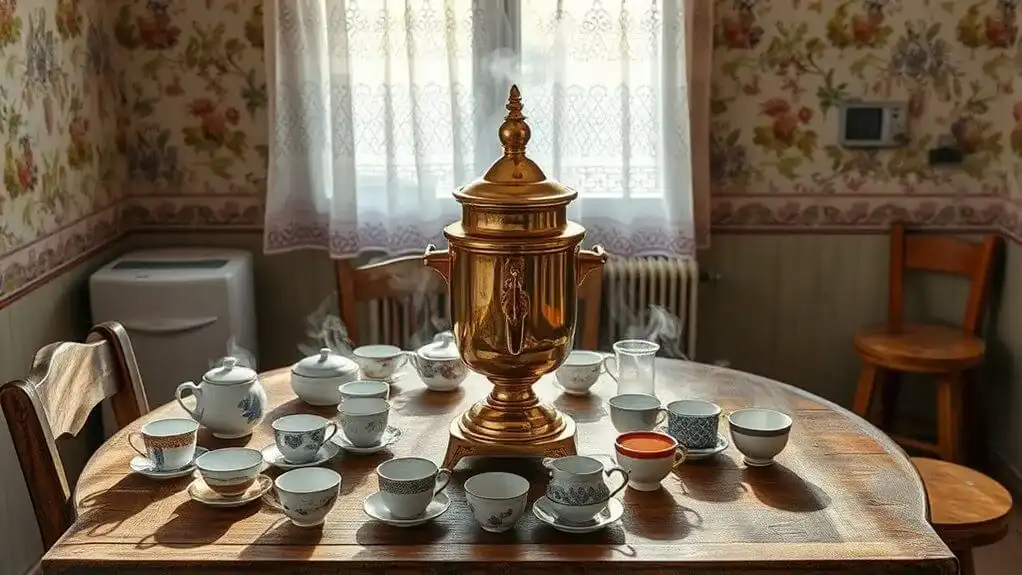
The samovar's technical brilliance extended far beyond its engineering, sparking a remarkable social revolution in Russian tea culture. By providing a cost-effective way to maintain hot water throughout the day, these devices dramatically improved tea accessibility across all social classes, transforming what was once a luxury into a daily necessity. Traditional models utilized hot coals in pipes to ensure continuous heating throughout gatherings. Tea evolved from being doctor prescribed for health issues into a cherished daily ritual.
The samovar's impact on social gatherings was equally profound. As a centerpiece of Russian hospitality, it fostered long conversations and strengthened family bonds. The device's unique design, allowing for customizable tea strength through its concentrated zavarka system, meant everyone could participate in tea drinking according to their preferences. Despite initial criticism from the Bolsheviks, who viewed it as a bourgeois symbol, the samovar's democratic nature prevailed, cementing its role in Russian cultural identity.
The Art of Russian Tea Service: Rituals and Customs

At the heart of Russian hospitality lies an intricate tea service ritual that transforms simple refreshment into an art form. The tea etiquette centers around the samovar, where the host carefully prepares zavarka, a concentrated tea that guests dilute to their liking with hot water. Originally introduced by Cossack immigrants, the samovar quickly became inseparable from Russian tea traditions. Tea ceremonies flourished after Peter the Great promoted tea drinking among nobility. Hosting rituals involve precise serving orders and traditional accompaniments like varenye, sushki, and sugar lumps, creating a warm, welcoming atmosphere.
- The gentle whistle of the samovar signals the beginning of treasured conversations
- Each sip from a delicate saucer connects guests to centuries of tradition
- The master of the samovar's practiced movements tell stories of generational wisdom
- Shared moments around the steaming tea create bonds that last a lifetime
The ceremony weaves together hospitality, conversation, and community, making every gathering a meaningful cultural experience.
Modern Evolution: the Samovar's Journey From Coal to Electricity
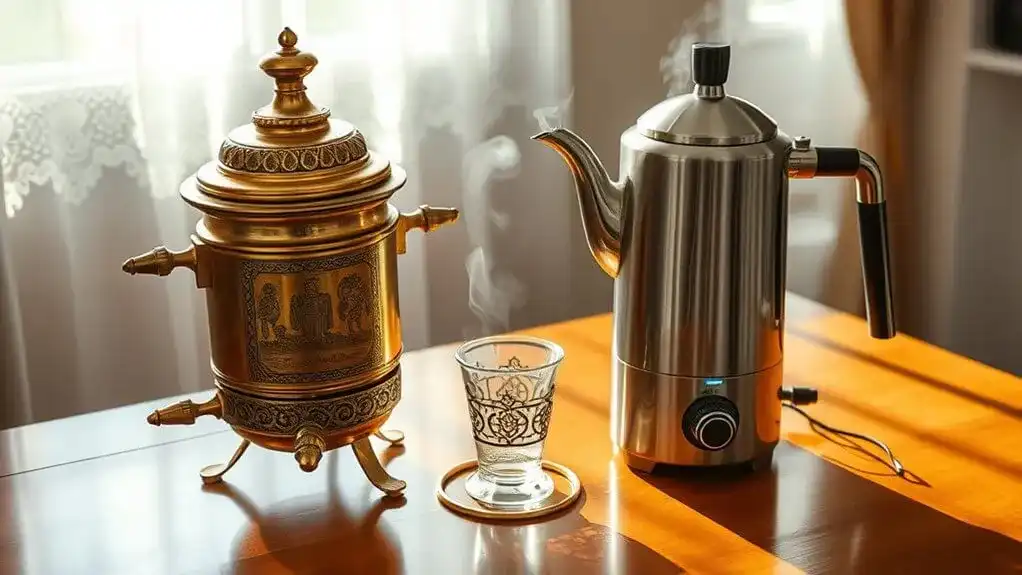
Since its inception in 18th-century Russia, the samovar has undergone remarkable technological evolution, transforming from a coal-burning vessel to a modern electric appliance. The traditional design relied on charcoal or pinecones, featuring a central combustion tube and ventilation chamber for efficient water heating. Originally made in the city of Tula, these traditional samovars became renowned for their craftsmanship and durability. These ornate vessels were crafted from various metals including copper and brass, making them both functional and decorative centerpieces.
While early 20th-century attempts at using petroleum and kerosene proved unsuccessful due to safety concerns, the real breakthrough in samovar innovations came in the 1950s with the introduction of nickel-plated electric models. These electric vs traditional designs offered significant advantages: faster brewing times, easier operation, and enhanced safety features. The new models, equipped with heating coils and ceramic insulation, quickly gained popularity in both homes and restaurants. Though electric kettles are common today, the samovar's cultural significance endures, particularly in Russian rural areas.
Conclusion
Like a steadfast lighthouse guiding ships through time, the samovar illuminates Russia's evolving relationship with tea. What began as a humble coal-burning vessel hasn't just survived – it's adapted and thrived, transforming from the nation's hearth to its cultural compass. Today's electric samovars may hum instead of crackle, but they still anchor Russia's tea traditions, bridging centuries of technological and social change.
